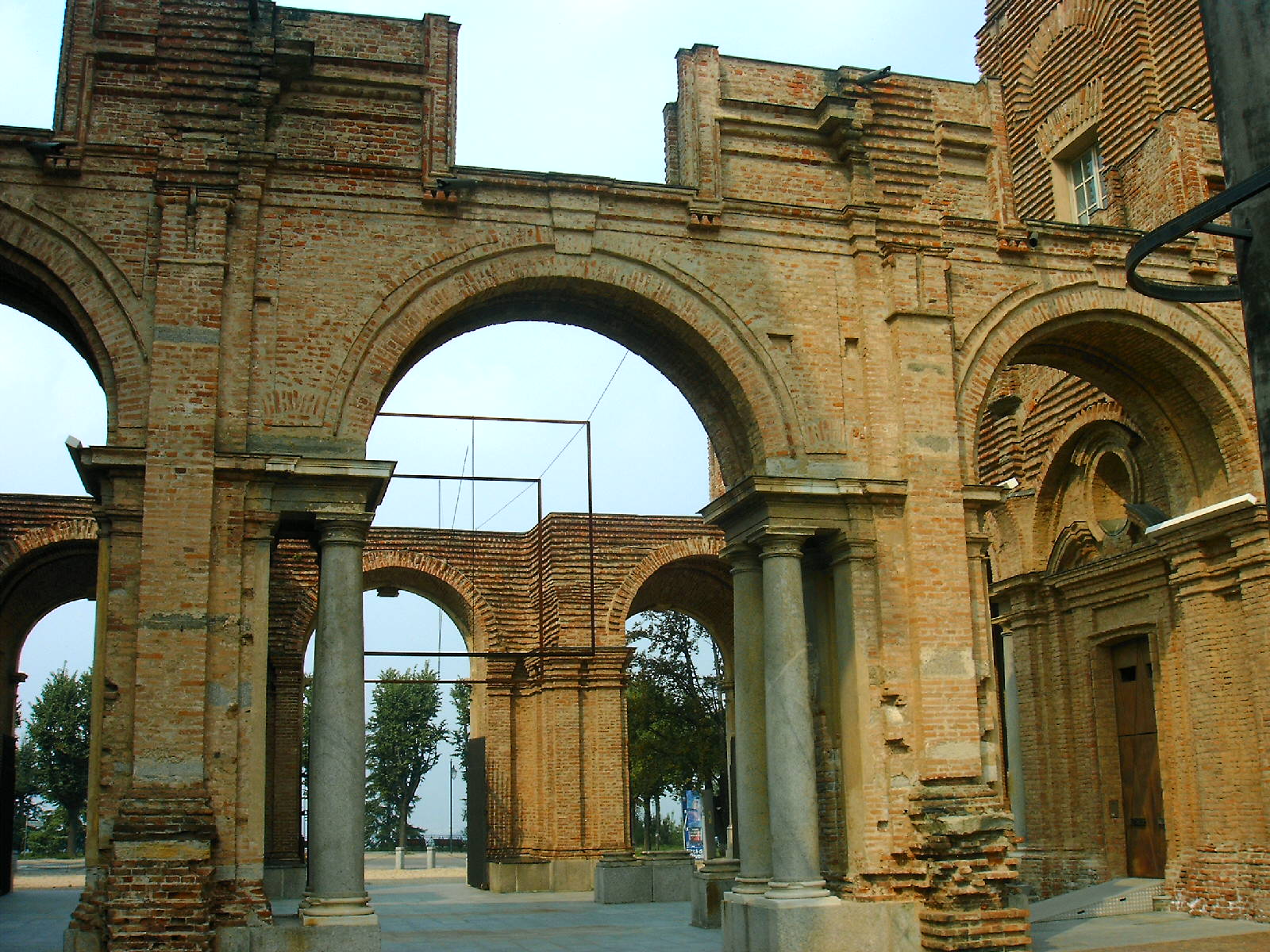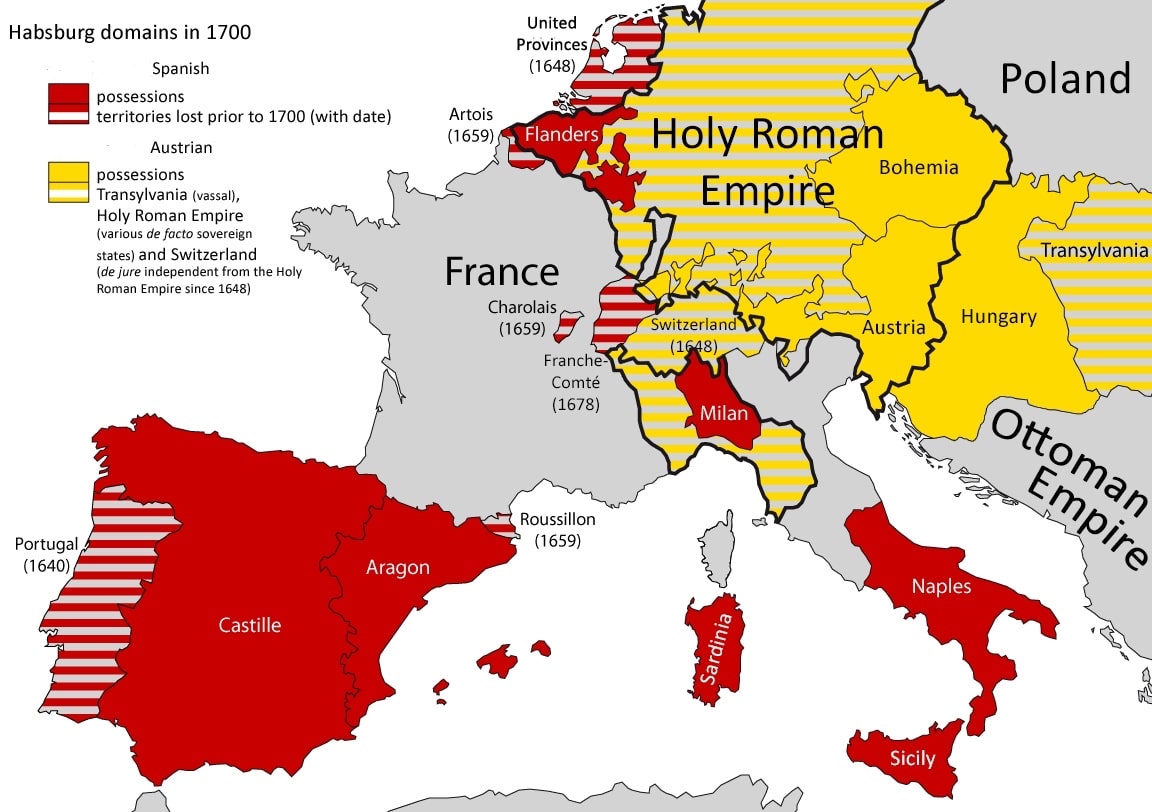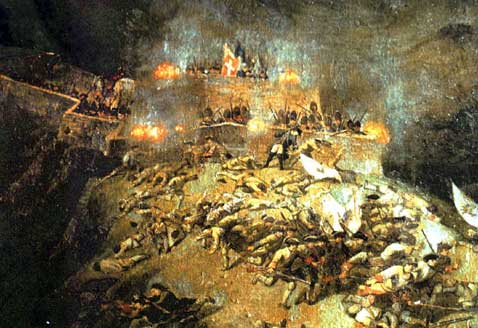|
Castle Of Rivoli
The Rivoli Castle is a former Residence of the Royal House of Savoy in Rivoli (Metropolitan City of Turin, Italy). It is currently home to the Castello di Rivoli – Museo d'Arte Contemporanea, the museum of contemporary art of Turin. In 1997, it was placed on the UNESCO World Heritage Site list along with 13 other residences of the House of Savoy. History The castle was probably built in the 9th–10th centuries. Its existence is mentioned for the first time in 1159, in a diploma by Emperor Frederick Barbarossa that ceded the Rivolese territories to the bishops of Turin. The House of Savoy acquired Rivoli in the 11th century. Soon afterwards, a feud began with the bishops, which in 1184 resulted in damage to the castle. In 1273 King Edward I of England visited, returning from crusade to England, he was met by the Count of Savoy's messengers before travelling on to Susa and the Mont Cenis on the way to visit Count Philip I at Saint-Georges-d'Espéranche. In 1330 Amadeus VI o ... [...More Info...] [...Related Items...] OR: [Wikipedia] [Google] [Baidu] |
Rivoli, Piedmont
Rivoli (; ) is a ''comune'' (municipality) established around the 1st century CE, in the Metropolitan City of Turin in the Italian region Piedmont, about west of Turin. As of January 2017, it had a population of 48,798.All demographics and other statistics: Italian statistical institute Istat. Rivoli borders the following municipalities: Turin, Pianezza, Caselette, Alpignano, Collegno, Rosta, Grugliasco, Villarbasse, Rivalta di Torino, Orbassano. History Although unproven by archaeological and historical sources, it is thought that before the Roman conquest the area of Rivoli was inhabited by the Taurini, a tribe of the Ligures, who, after the 4th century BC, were most likely joined by a Celtic migration from what is today southern France. The Romans conquered the area in 221 BC. The first findings are from the 1st and 2nd century CE, belonging to Roman sepultures. Main sights The Castle of Rivoli, an unfinished residence of the Royal House of Savoy, currently h ... [...More Info...] [...Related Items...] OR: [Wikipedia] [Google] [Baidu] |
Treaty Of Cateau-Cambrésis
The Treaty of Cateau-Cambrésis in April 1559 ended the Italian Wars (1494–1559). It consisted of two separate treaties, one between England and France on 2 April, and another between France and Spain on 3 April. Although he was not a signatory, both were approved by Emperor Ferdinand I, since many of the territorial exchanges concerned states within the Holy Roman Empire. Henry II of France abandoned claims on the Italian states ruled by Philip II of Spain (the southern kingdoms of Naples, Sicily, and Sardinia, along with the Duchy of Milan in the north), restored an independent Savoy, returned Corsica to Genoa, and formally recognised the Protestant Elizabeth I as queen of England, rather than her Catholic cousin, Mary, Queen of Scots. In exchange, France strengthened its southern, eastern and northern borders, confirming the occupation of the Three Bishoprics and the recapture of Calais from England. Background The Italian Wars between the House of Valois and the House ... [...More Info...] [...Related Items...] OR: [Wikipedia] [Google] [Baidu] |
Marchesa Di Spigno
Anna Carlotta Teresa Canalis di Cumiana (23 April 1680 – 13 April 1769) was a playwright and the Morganatic marriage, morganatic wife of Victor Amadeus II of Savoy, Victor Amadeus II, King of Sardinia. She was created Marquis, Marchesa of Spigno Monferrato, Spigno. Early life Born at the Palazzo Canalis, Turin in 1680, she was the daughter of Francesco Maurizio Canalis, Count of Cumiana (1654-1718) and his wife, Monica Francesca San Martino d'Agliè dei Marchesi di San Germano (1650-1710). Lady in waiting Receiving education as a nun at the Convent of the Visitation in Turin, she was introduced to the House of Savoy, ducal court of Savoy in 1695. She was made a lady-in-waiting to Marie Jeanne of Savoy, mother of the ruler, Victor Amadeus II. She was styled as ''Mademoiselle de Cumiana''. She was married on 21 April 1703 to Ignazio Francesco Novarina, Count of San Sebastiano (1680-1724), by whom she had eight children. The marriage was arranged by Duchess Marie Jeanne, to ... [...More Info...] [...Related Items...] OR: [Wikipedia] [Google] [Baidu] |
Morganatic Marriage
Morganatic marriage, sometimes called a left-handed marriage, is a marriage between people of unequal social rank, which in the context of royalty or other inherited title prevents the principal's position or privileges being passed to the spouse, or any children born of the marriage. The concept is most prevalent in German-speaking territories and countries most influenced by the customs of the German-speaking realms. Generally, this is a marriage between a man of high birth (such as from a reigning, deposed or mediatised dynasty) and a woman of lesser status (such as a daughter of a low-ranked noble family or a commoner).Webster's Online Dictionary . Retrieved 2008-07-10. Diesbach, Ghislain de. ... [...More Info...] [...Related Items...] OR: [Wikipedia] [Google] [Baidu] |
Charles Emmanuel III
Charles Emmanuel III (27 April 1701 – 20 February 1773) was Duke of Savoy, List of monarchs of Sardinia, King of Sardinia and ruler of the Savoyard states from his Victor Amadeus II, father's abdication on 3 September 1730 until his death in 1773. He was the paternal grandfather of the last three mainline kings of Sardinia. In the War of the Polish Succession, he initially gained Lombardy but later ceded it for smaller territorial gains. During the War of the Austrian Succession, he defended Piedmont against a Franco-Spanish army, winning the Battle of Assietta. The Treaty of Aix-la-Chapelle (1748), Treaty of Aix-la-Chapelle restored lost lands and expanded his territory. He strengthened ties with Spain through marriage alliances. He chose not to get involved in the Seven Years' War, Seven Years War and instead focused on administrative reforms and maintaining a well-disciplined army. Biography Early life Charles Emmanuel was born in Turin to Victor Amadeus II of Savoy ... [...More Info...] [...Related Items...] OR: [Wikipedia] [Google] [Baidu] |
Carlo Vincenzo Ferrero D'Ormea
Carlo Vincenzo Ferrero d'Ormea (5 April 1680, Mondovì – 29 May 1745, Turin) was an Italian politician and diplomat. He was president of the Council of the Kingdom of Sardinia from 1742 to 1745. Life Early career – from prefect to general of finances (1713–1724) On 16 December 1713, he was appointed as Prefect-intendant of Susa. Here, he was faced with the complex integration and defence of the Barcelonnette area, which had been awarded to the Kingdom of Sardinia by the Treaty of Utrecht (1713). He brought this to a successful conclusion, and his ability shown in Susa was noticed in Turin. Victor Amadeus II considered him too competent an official to be left in the province and on 16 April 1717, he appointed him General of finances. Ormea then moved to Turin, taking up lodgings in the Royal palace, in an apartment located in the so-called Palazzo Vecchio (which no longer exists today). Called to lead the state finances at a time when a great wave of reforms was unfolding ... [...More Info...] [...Related Items...] OR: [Wikipedia] [Google] [Baidu] |
Charles Emmanuel III Of Sardinia
Charles Emmanuel III (27 April 1701 – 20 February 1773) was Duke of Savoy, King of Sardinia and ruler of the Savoyard states from his father's abdication on 3 September 1730 until his death in 1773. He was the paternal grandfather of the last three mainline kings of Sardinia. In the War of the Polish Succession, he initially gained Lombardy but later ceded it for smaller territorial gains. During the War of the Austrian Succession, he defended Piedmont against a Franco-Spanish army, winning the Battle of Assietta. The Treaty of Aix-la-Chapelle restored lost lands and expanded his territory. He strengthened ties with Spain through marriage alliances. He chose not to get involved in the Seven Years War and instead focused on administrative reforms and maintaining a well-disciplined army. Biography Early life Charles Emmanuel was born in Turin to Victor Amadeus II of Savoy and his first wife the French Anne Marie d'Orléans. His maternal grandparents were Prince Phili ... [...More Info...] [...Related Items...] OR: [Wikipedia] [Google] [Baidu] |
Filippo Juvarra
Filippo Juvarra (7 March 1678 – 31 January 1736) was an Italian architect, scenographer, engraver and goldsmith. He was active in a late-Baroque architecture style, working primarily in Italy, Spain, and Portugal. Biography Juvarra was born in Messina, Sicily, to a family of goldsmiths and engravers. He spent his formative years with his family in Sicily, working in the family shop, but also studied for the priesthood, to which he was ordained in 1703. At the same time, he made his mark as a draughtsman - designing Messina's festive settings for the coronation of Philip V of Spain and Sicily (1701) - and studied architecture independently, working from books alone, such as those by Vitruvius and Vignola. Juvarra moved to Rome in 1704. There he studied architecture with Carlo and Francesco Fontana. The first phase of his independent career was occupied with designs for ceremonies and celebrations, and especially with set designs for theatres. Juvarra's set designs incorpor ... [...More Info...] [...Related Items...] OR: [Wikipedia] [Google] [Baidu] |
Victor Amadeus II
Victor Amadeus II (; 14 May 166631 October 1732) was the head of the House of Savoy and ruler of the Savoyard states from 12 June 1675 until his abdication in 1730. He was the first of his house to acquire a royal crown, ruling first as King of Sicily (1713–1720) and then as King of Sardinia (1720–1730). Among his other titles were Duke of Savoy, Duke of Montferrat, Prince of Piedmont, Marquis of Saluzzo and Count of Aosta, Maurienne and Nice. Louis XIV arranged his marriage in order to maintain French influence in Savoy, but Victor Amadeus soon broke away from the influence of France. At his father's death in 1675, his mother, Marie Jeanne Baptiste of Nemours, was regent in the name of her nine-year-old son and would remain in '' de facto'' power until 1684 when Victor Amadeus banished her further involvement in the state. Having fought in the War of the Spanish Succession, he was rewarded with the Kingdom of Sicily in 1713, but he was forced to exchange this title ... [...More Info...] [...Related Items...] OR: [Wikipedia] [Google] [Baidu] |
War Of The Spanish Succession
The War of the Spanish Succession was a European great power conflict fought between 1701 and 1714. The immediate cause was the death of the childless Charles II of Spain in November 1700, which led to a struggle for control of the Spanish Empire between supporters of the French House of Bourbon, Bourbons and the Austrian House of Habsburg, Habsburgs. Charles had named as his heir Philip V of Spain, Philip of Anjou, a grandson of Louis XIV of France, whose claim was backed by Kingdom of France, France and most of Habsburg Spain, Spain. His Habsburg rival, Charles VI, Holy Roman Emperor, Archduke Charles, was supported by the Grand Alliance (League of Augsburg), Grand Alliance, whose primary members included Habsburg monarchy, Austria, the Dutch Republic, and Kingdom of Great Britain, Great Britain. Significant related conflicts include the Great Northern War (1700–1721) and Queen Anne's War (1702–1713). Although by 1701 Spain was no longer the predominant European power, ... [...More Info...] [...Related Items...] OR: [Wikipedia] [Google] [Baidu] |
Amedeo Di Castellamonte
Amedeo Cognengo di Castellamonte (1618 – 17 September 1683) was an Italian architect, civil and military engineer. Biography He was born in Castellamonte (in what is now the province of Turin, then in the Duchy of Savoy). His father Carlo became chief architect of Duke Charles Emmanuel I of Savoy in 1615. After graduating in law in the University of Turin and continuing his studies in Rome, Amedeo begun to work alongside his father, whose works later he continued thanks to his significant talent in urban planning and architecture. In 1646 he continued works at the Ducal (now Royal) Palace in Turin, finishing (1658) the facade and the central body flanked by two raised ones, and the relative connection with the castle square. Later Amedeo was commissioned to create a new plan of for the city's expansions, after the one led by his father in 1620. As in the latter's, he kept the original Roman's centuriation, but also kept the oblique course of the "Borgo Po" (modern Via Po) ... [...More Info...] [...Related Items...] OR: [Wikipedia] [Google] [Baidu] |
Carlo Di Castellamonte
Carlo Cognengo di Castellamonte (1560–1641) was an Italian architect, civil and military engineer, one of the main exponents of Piedmontese Baroque. Castellamonte was born in Turin. After his studies in Rome, he returned in Piedmont where was assistant to Ascanio Vitozzi. Named Architect of the House of Savoy in 1615, he continued the program of urban and architectural renovation of Turin commissioned to Vitozzi by Charles Emmanuel I. Castellamonte worked at the prosecution of Via Roma (1621), the project of the ''Piazza Reale'' (today San Carlo Square), the church of St. Christine on the latter (façade by Filippo Juvarra from 1715 to 1718), the enlargement of the Castle of Valentino (begun in 1633 and continued by his son Amedeo Amedeo is an Italian theophoric given name meaning "lover of God", "loves God", or more correctly "for the love of God" and cognate to the Latin name Amadeus, the Spanish Amadeo, the Catalan and Portuguese Amadeu and the French Amédée. Pe ... [...More Info...] [...Related Items...] OR: [Wikipedia] [Google] [Baidu] |







